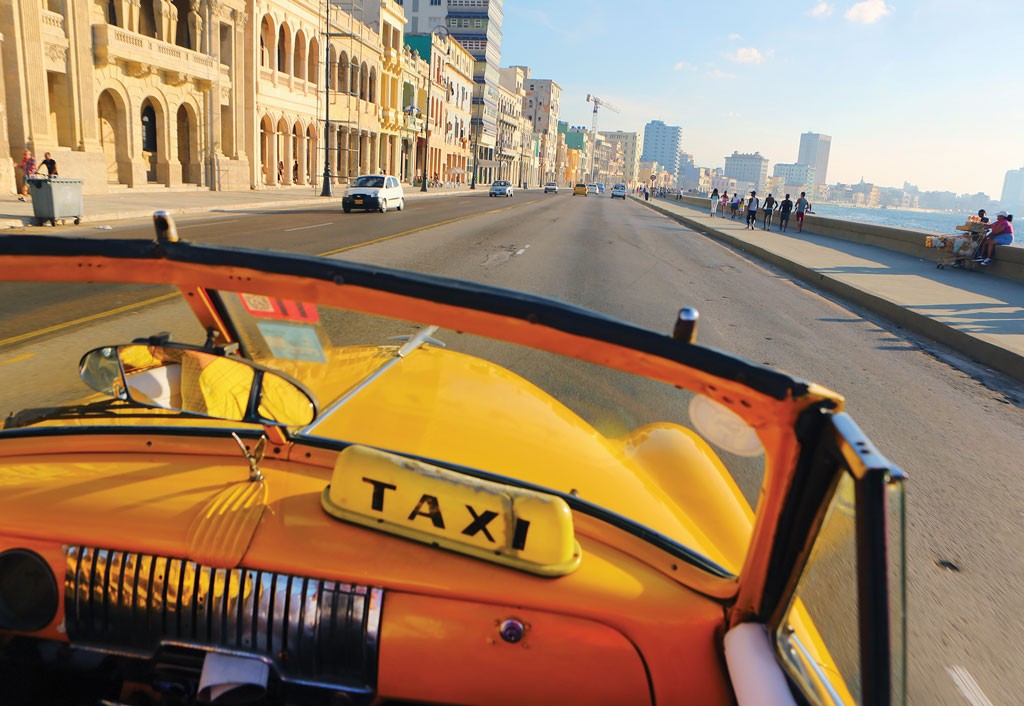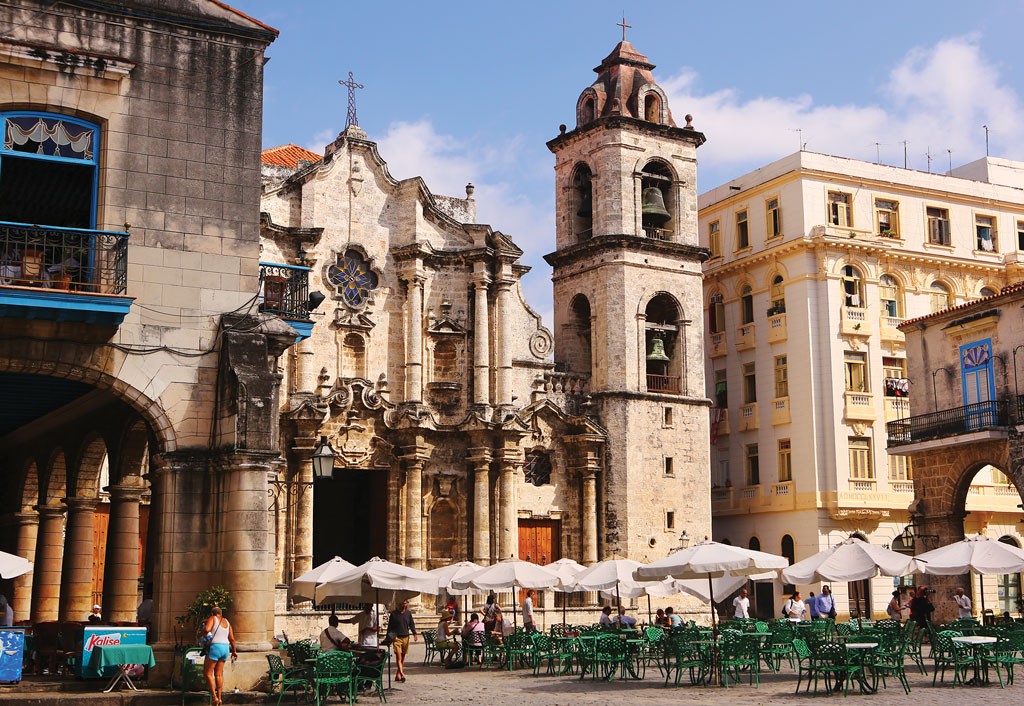
A taxi on the malécon. Photo © Christopher P. Baker.
Havana is so large and the sights to be seen so many, that one week is the bare minimum needed. Metropolitan Havana sprawls over 740 square kilometers (286 square miles) and incorporates 15 municipios (municipalities). Havana is a collection of neighborhoods, each with its own distinct character. Since the city is so spread out, it is best to explore Havana in sections, concentrating your time on the three main districts of touristic interest—Habana Vieja, Vedado, and Miramar—in that order. Despite Havana’s great size, most sights of interest are highly concentrated, and most exploring is best done on foot.If you have only one or two days in Havana, book a get-your-bearings trip by HabanaBusTour or hop on an organized city tour offered by Havanatur or a similar agency. This will provide an overview of the major sites. Concentrate the balance of your time around Parque Central, Plaza de la Catedral, and Plaza de Armas. Your checklist of must-sees should include the Capitolio Nacional, Museo de la Revolución, Museo Nacional de Bellas Artes, Catedral de la Habana, Museo de la Ciudad de la Habana, and Parque Histórico Militar Morro-Cabaña, featuring two restored castles attended by soldiers in period costume.Habana Vieja, the original colonial city within the 17th-century city walls (now demolished), will require at least three days to fully explore. You can base yourself in one of the charming historic hotel conversions close to the main sights of interest.

Plaza de la Catedral, Habana Vieja. Photo © Christopher P. Baker.
Centro Habana has many casas particulares but few sites of interest, and its rubble-strewn, dimly lit streets aren’t the safest. Skip Centro for Vedado, the modern heart of the city that evolved in the early 20th century, with many ornate mansions in beaux-arts and art nouveau style. Its leafy streets make for great walking. Many of the city’s best casas particulares are here, as are most businesses, paladares, and nightclubs. The Hotel Nacional, Universidad de la Habana, Cementerio Colón, and Plaza de la Revolución are sights not to miss.
If you’re interested in beaux-arts or art deco architecture, then the once-glamorous Miramar, Cubanacán, and Siboney regions, west of Vedado, are worth exploring. Miramar also has excellent restaurants, deluxe hotels, and some of my favorite nightspots.
About 15 kilometers east of the city, long, white-sand beaches—the Playas del Este—prove tempting on hot summer days.Most other sections of Havana are run-down residential districts of little interest to tourists. A few exceptions lie on the east side of Havana harbor. Regla and neighboring Guanabacoa are together a center of Santería and Afro-Cuban music. The 18th-century fishing village of Cojímar has Hemingway associations, and the nearby community of San Miguel de Padrón is where the great author lived for 20 years. A visit to his home, Finca Vigía, today the Museo Ernest Hemingway, is de rigueur. Combine it with a visit to the exquisite colonial Iglesia de Santa María del Rosario. About 15 kilometers east of the city, long, white-sand beaches—the Playas del Este—prove tempting on hot summer days.In the suburban district of Boyeros, to the south, the Santuario de San Lázaro is an important pilgrimage site. A visit here can be combined with the nearby Mausoleo Antonio Maceo, where the hero general of the independence wars is buried outside the village of Santiago de las Vegas. A short distance east, the Arroyo Naranjo district has Parque Lenin, a vast park with an amusement park, horseback rides, boating, and more. Enthusiasts of botany can visit the botanical garden, Jardín Botánico Nacional.
Despite Havana’s great size, most sights of interest are highly concentrated, and most exploring is best done on foot.

Havana
Excerpted from the Sixth Edition of Moon Cuba.